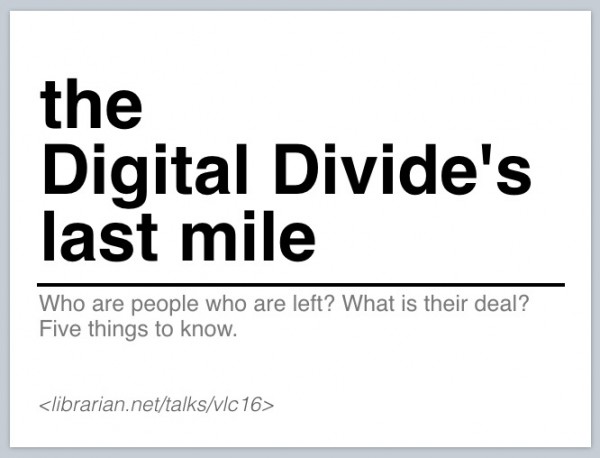I’ve been refining my library talks lately. The one I’ve given a few times over the past year has to do with the 15% of Americans who still don’t use the internet (no phone, no home internet, no work internet, nothing). How do we work on this issue? Part of the good news is that the new Lifeline Program guidelines from the FCC do include “digital inclusion” (that is, making sure people can use the tools not just have access to them) as part of what the program is supposed to accomplish. This is good. And people have access via their libraries. This is also good. But some of what needs doing is creating a safe place where people can learn technology without being harassed by messages of hazards and pitfalls and social gaffes, often perpetuated by people trying to sell you something. And this messaging starts with us, librarians and educators and people who see these 15% as part of our daily lives. Positive messaging is more important than we give it credit for. This talk goes into detail about ways to do that and important things to think about in our own speech.
